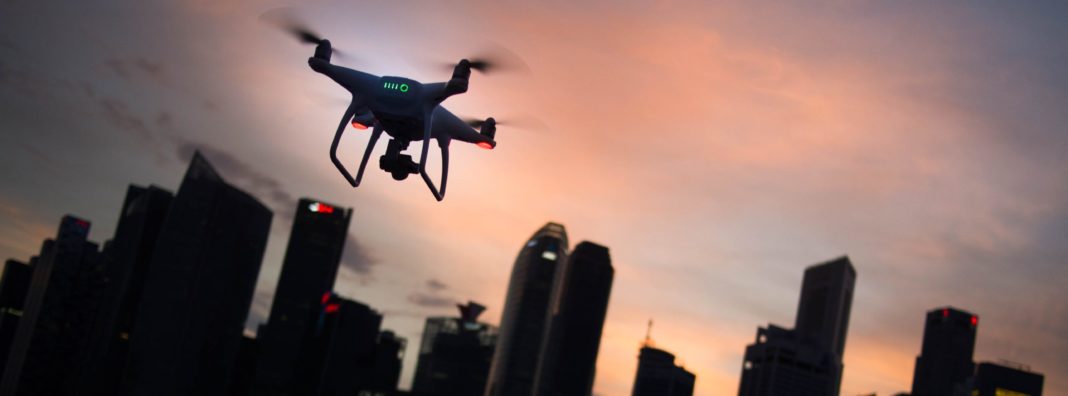
A sort of holy grail for drone policy has been a system of oversight that doesn’t stifle innovation and doesn’t overburden the legacy air traffic system. State and federal regulators, policy experts, and drone advocates have all tried their hand at achieving the unachievable since at least 2005-when the FAA granted the first unmanned civilian aircraft license. To this day, however, there has been little agreement on the best path forward for low-altitude flight.
Peering through the looking glass at a future bustling with drone traffic, it is clear that a well-thought-out technical solution to manage air traffic will be the necessary groundwork. Fortunately, the FAA and NASA have been working on a technical solution, called UTM or the Unmanned Aircraft Systems (UAS) Traffic Management System, since 2016.
If uniformly adopted, UTM will pave the way for drone innovation. Setting our sights higher in the skies, UTM could also unlock new possibilities for the future of air travel. At a bare minimum, however, the UTM partnership has shown us that rather than a regulatory approach, a technical solution can be just as effective.
What is so hard about drone regulation?
The 2010s were a problematic decade for regulators, drone manufacturers, and drone operators alike. Drones took up plenty of news coverage as they disrupted airport runways, landed on the White House lawn, narrowly missed passing aircraft, and hovered ominously over baseball stadiums.
Yet as regulators quickly came to realize, there has been very little they can do. Even the FAA’s response in 2015—requiring drone operators to obtain drone registrations with hefty penalties for non-compliance—did not solve the disruption problem. Registration or not, in the unlikely event that a drone turned devious, authorities on the ground, hundreds of feet away, lacked any meaningful way to trace a drone to its pilot. Anything short of a large net or a shotgun, and the drone would simply fly away.
At the state level, solutions like property rights in airspace, geofencing, and altitude restrictions, have been proposed and tested over the years. They have appealed to some in the short term, especially given the fact that fleets of drones do not currently fill the sky in many locations. But at best, they create a patchwork of arbitrary rules for a drone ecosystem that is quickly evolving.
At the federal level, Congress first directed the FAA to study ways to integrate drones into the national airspace in 2012. The glaring problem identified was the already overtaxed human-centric air traffic control system first conceptualized in 1922. In light of this limitation, adding multitudes of low-altitude drones into the mix was a logistical nonstarter.
After a decade of trying and failing to create a tenable regulatory framework for balancing innovation with regulation, it has become clear that the drone problem is not a policy problem. It is a technical problem requiring technological innovation and development to reach a scalable and sustainable solution.
The technical solution to drone regulation
Recognition of the limitations in regulatory solutions alone came in 2016 when Congress directed NASA to join the FAA and help create a prototype for integrating drones into the national airspace. Over the next four years, the FAA, NASA, and private industry partners conceptualized, designed, and tested what would come to be UTM.
Baked into UTM is a technological solution for tracking drones in the sky, called Remote Identification (Remote ID). Sometimes called a “digital license plate,” Remote ID solves the enforcement problem currently plaguing regulators. Like a GPS tracker, Remote ID is a capability built into a drone that sends data about its registration, location, trajectory, altitude, and flight path back to a managing authority. That managing authority, called a UAS service supplier, can identify drones in flight based on the Remote ID signal and pass along identification information to enforcement authorities when necessary.
Without any Remote ID requirements, however, drones are likely to continue to be manufactured without remote ID capability, protecting bad actors in the future. This is hardly the result we should expect from a comprehensive regulatory strategy. Thus, in 2021, the FAA handed down the Remote ID Rule, requiring that all drones be fitted with Remote ID capability by 2023.
Of course, as with all technical solutions required by law, compliance costs add up quickly. This has been a sticking point highlighted by critics in the Remote ID rulemaking process. As Brent Skorup and Michael Kotrous noted in the proceedings, manufacturers and operators will bear a large chunk of the burden of fitting remote ID capability in all drones flying in controlled or uncontrolled airspace.
However, in the final rule, the FAA relaxed aspects of the Remote ID rule, like internet capability requirements, which cut the expense by 60 percent. Whatsmore, given the pressing problems Remote ID can solve, the technical solution is well worth the cost.
Scaling up the technical solution to low-altitude air traffic management
Remote ID, however, is only a small piece of the larger technical answer to low-altitude air traffic management that is UTM.
As a technical solution to many problems and operational requirements, UTM is designed around a federated enterprise architecture, which means instead of a single network of authority, it relies on a collective system that divides control between the FAA and UAS service suppliers.
Instead of adding drone management to the already limited bandwidth of air traffic controllers, UTM places the burden on UAS service suppliers to do most of the work.
The FAA sets the standards for low-altitude flights, and service suppliers communicate those standards to individual drone operators. Service suppliers also coordinate and approve drone flight plans, maintain clear airspace over restricted areas, and send operational data back to the FAA. The FAA has final authority to intervene if necessary, but UTM takes most of the workload off traditional air traffic controllers. That leaves them free to continue managing standard high-altitude air traffic, relatively uninterrupted by the drones flying below.
At a more technical level, UTM itself is also designed to handle the functions of human air traffic controllers autonomously. To do this, it leverages a network of data service providers and operational service providers to automate the logistical process and communicate FAA rules to drone operators.
Scaling the technical solution to higher altitudes
As others have noted, a regulatory system in the absence of UTM is sufficient for a whole host of drone functions, like inspecting the scenes of fires, inspecting railroad tracks, inspecting roofs, and other useful applications. But there is a much larger swath of possibilities that drones are unable to perform without a uniform system of air traffic management to ensure safety, enforce rules, and provide consistency across state lines.
Advancements could unlock new businesses and opportunities like Urban Air Mobility (UAM), which will depend on consistent drone standards to ensure the success of commercial drones. Those advancements go well beyond merely expanding the distance a drone can travel to deliver a package or the weight a drone can carry. They will include capabilities beyond present imagination, with the most readily conceivable being passenger-carrying air taxis. Outside of low-altitude air space, the UTM framework has also inspired NASA to develop systems for high-altitude aircraft and slow-moving blimps, among others.
The opportunity we have now to implement and test a forward-focused framework for air traffic management should not be squandered. The task at hand is to reimagine air traffic and find ways to encourage its evolution, not fit it into an outdated regulatory structure.
When the Remote ID rule becomes enforceable in 2023, enabling the effective implementation of UTM, the future of air travel as we know it will move at a pace unseen in the twenty-first century.

